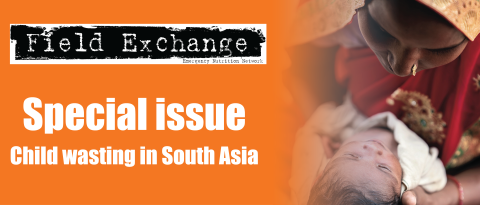Birthweight and feeding practices are associated with child growth outcomes in South Asia
Research snapshot1
Child wasting has received much less policy attention in South Asia than stunting, despite the region being home to over half the word’s wasted children and a reduction in child wasting being one of the targets of the Sustainable Development Goal 2. In addition, there is evidence that being wasted increases individual risk of stunting, which suggests that the high prevalence of stunting in the region is partly driven by the high prevalence of wasting. Understanding the predictors of wasting and severe wasting can help inform the design of preventive interventions. Data from recent surveys in six South Asian countries (Afghanistan, Bangladesh, India, Maldives, Nepal and Pakistan) were pooled to examine the associations between low birth weight (LBW), breastfeeding practices and complementary feeding practices with child wasting, severe wasting and the concurrence on wasting and stunting – a highly vulnerable state that carries a similar mortality risk to severe wasting.
Using multiple logistic regression models, adjusted for the surveys’ clustered designs and potential confounding factors, the analysis found that children with reported LBW were significantly more likely to be wasted, severely wasted and concurrently wasted and stunted than non-LBW infants. The analysis also revealed the protective effect of infant and young child feeding (IYCF) against child wasting. Children aged 0 to 23 months who started breastfeeding within one hour of birth, who were not given prelacteal feeds and those aged 0-5 months who were exclusively breastfed were less likely to be wasted. In India, children aged 6-23 months who were fed diverse meals were less likely to be wasted and concurrently wasted and stunted. Findings demonstrate that greater investments in improving women’s nutrition both before and during pregnancy and in improving IYCF practices in early life are needed to reduce the very high prevalence of wasting in South Asia. Wasting shares these predictors with stunting, which indicates the need to address both forms of malnutrition in a more coherent manner and not to separate them conceptually or programmatically.
1 Harding, K. L., Aguayo, V. M., & Webb, P. (2018). Birthweight and feeding practices are associated with child growth outcomes in South Asia. Maternal & Child Nutrition, 14(S4), e12650. https://doi.org/10.1111/mcn.12650


